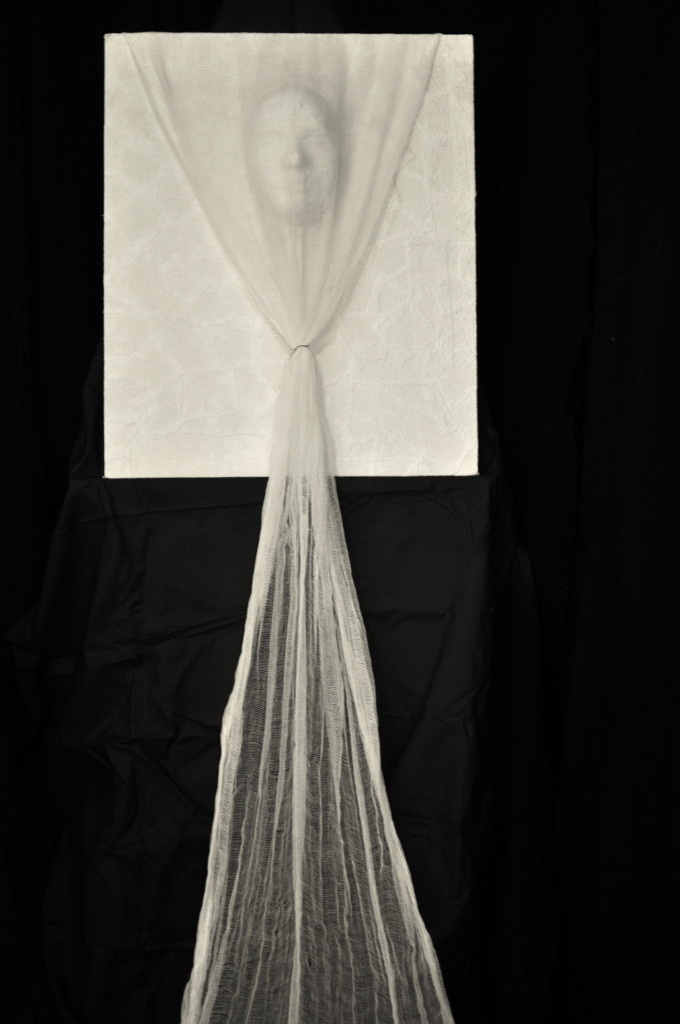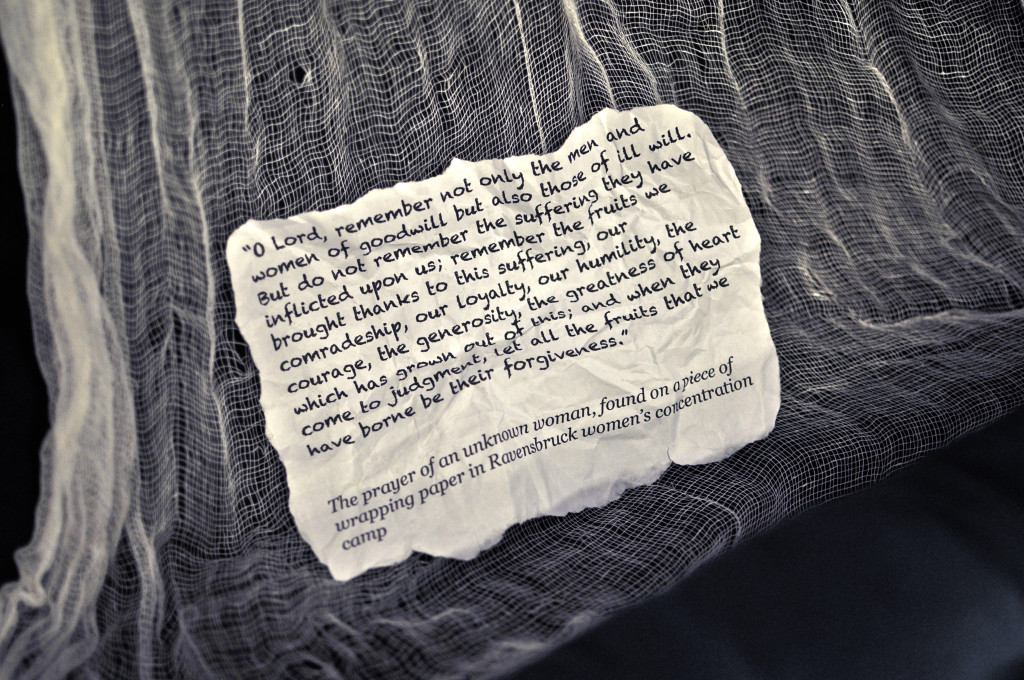Remember and Forgive
Poles 24.9%, Germans 19.9%, Jews 15.1%, Russians 15.0%, French 7.3%, Gypsies 5.4%, other 12.4%. This is the estimated makeup of the prisoners at the Ravensbruck women’s concentration camp during WWII. The Gestapo categorized the prisoners as follows: political 83.54%, anti-social 12.35%, criminal 2.02%, Jehovah Witnesses 1.11%, “racial defilement” 0.78%, other 0.20%.
Dividing people into categories; fearing our differences; denying our shared humanity; segregating and separating; asserting that some people are categorically better than others—these are practices that lead to suffering and to death.
A woman whose name we do not know wrote a prayer on a slip of wrapping paper that was found at the Ravensbruck concentration camp. (You will find the prayer in this station.) She might have been Jewish and wearing a yellow Star of David to mark her identity. Or she might have been a lesbian and therefore wearing a pink triangle instead of a yellow star, or a black triangle to indicate an “anti-social” identity. In addition to LGBT persons, black triangles were also worn by prostitutes, Roma people or “Gypsies,” and women who refused to marry. She might have worn a red triangle if she was a political prisoner, or a green one if she was considered a “criminal.” Jehovah’s Witnesses wore purple triangles.
Who wrote this prayer? How did she forgive? How did her forgiveness save her?
Nearly 2000 years earlier, Jesus, a Jewish teacher, was killed publicly by the Roman empire, just as many more thousands were also executed by crucifixion. How could Jesus pray, “Father, forgive them; for they know not what they do.” Did he see beyond the identities that separated them? Did he love some part of them that even they could not see?
I ask myself, could I pray the prayer that Jesus prayed? Could I pray the prayer of the anonymous woman at Ravensbruck?
Could you?
Related Scripture
John 19:38-42
Afterward Joseph of Arimathea, who had been a secret disciple of Jesus (because he feared the Jewish leaders), asked Pilate for permission to take Jesus’ body down. When Pilate gave him permission, he came and took the body away.
Nicodemus, the man who had come to Jesus at night, also came, bringing about seventy-five pounds of embalming ointment made from myrrh and aloes. Together they wrapped Jesus’ body in a long linen cloth with the spices, as is the Jewish custom of burial.
The place of crucifixion was near a garden, where there was a new tomb, never used before. And so, because it was the day of preparation before the Passover and since the tomb was close at hand, they laid Jesus there.
Artwork created by Nanette Sawyer
Grace Commons
20″ (excluding fabric extension) x 24″
Plaster sculpture on canvas board with acrylic paint

